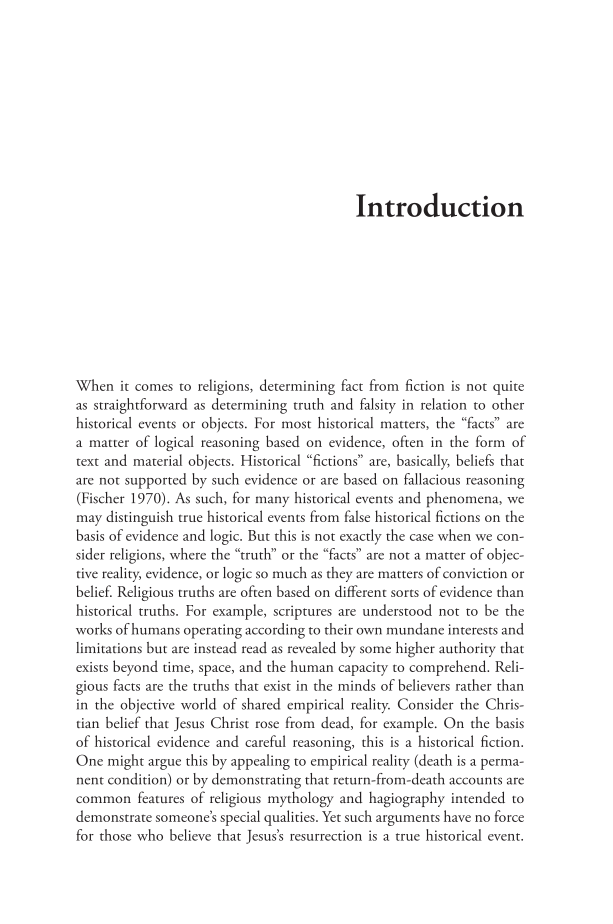Introduction When it comes to religions, determining fact from fiction is not quite as straightforward as determining truth and falsity in relation to other historical events or objects. For most historical matters, the “facts” are a matter of logical reasoning based on evidence, often in the form of text and material objects. Historical “fictions” are, basically, beliefs that are not supported by such evidence or are based on fallacious reasoning (Fischer 1970). As such, for many historical events and phenomena, we may distinguish true historical events from false historical fictions on the basis of evidence and logic. But this is not exactly the case when we con- sider religions, where the “truth” or the “facts” are not a matter of objec- tive reality, evidence, or logic so much as they are matters of conviction or belief. Religious truths are often based on different sorts of evidence than historical truths. For example, scriptures are understood not to be the works of humans operating according to their own mundane interests and limitations but are instead read as revealed by some higher authority that exists beyond time, space, and the human capacity to comprehend. Reli- gious facts are the truths that exist in the minds of believers rather than in the objective world of shared empirical reality. Consider the Chris- tian belief that Jesus Christ rose from dead, for example. On the basis of historical evidence and careful reasoning, this is a historical fiction. One might argue this by appealing to empirical reality (death is a perma- nent condition) or by demonstrating that return-from-death accounts are common features of religious mythology and hagiography intended to demonstrate someone’s special qualities. Yet such arguments have no force for those who believe that Jesus’s resurrection is a true historical event.
Document Details My Account Print multiple pages
Print
You have printed 0 times in the last 24 hours.
Your print count will reset on at .
You may print 0 more time(s) before then.
You may print a maximum of 0 pages at a time.












































































































































































